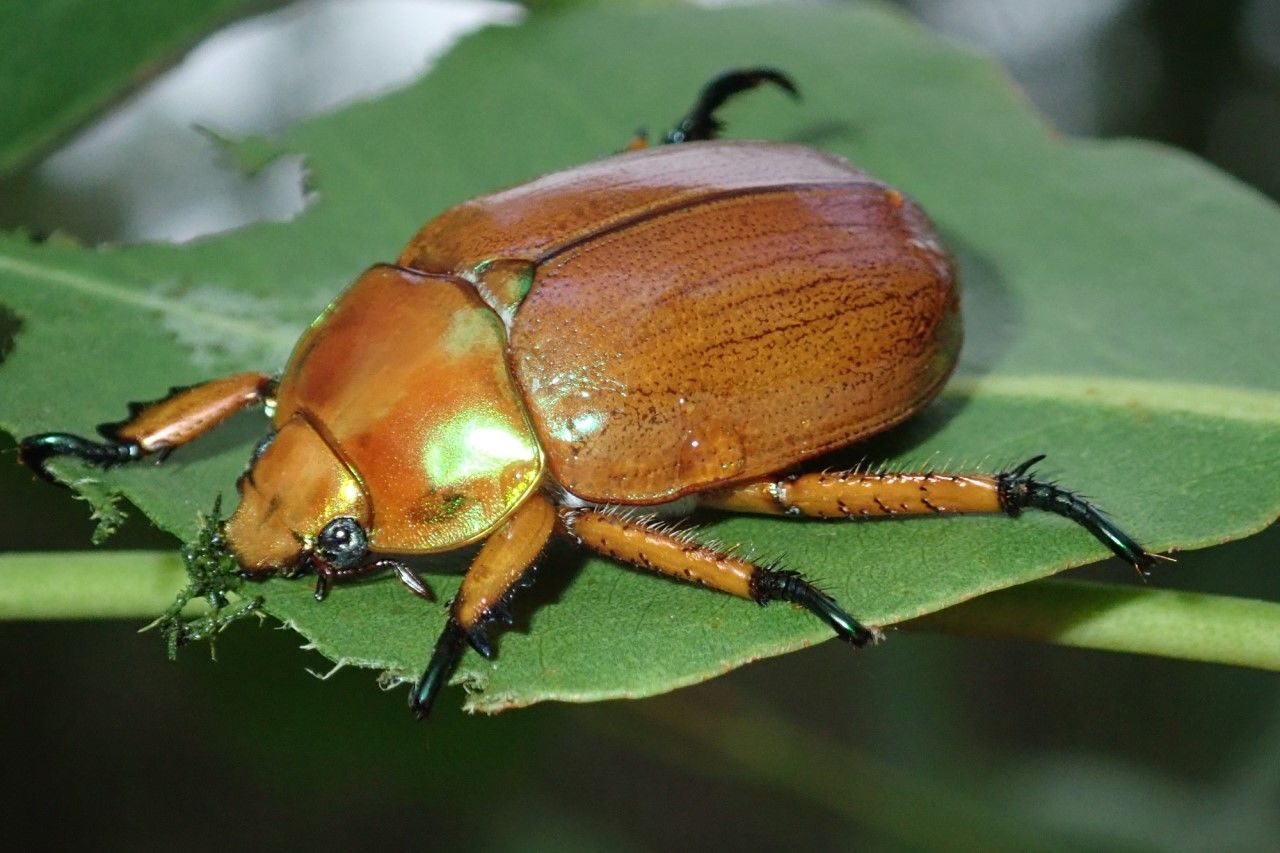Where have all the Christmas beetles gone?
Christmas is not the same without the shiny, glittering flying visitor - and we do not mean Santa.

Growing up in the city, the Christmas season meant cricket tests on the TV, beach holidays, decorating the Christmas tree with delicate baubles, and iridescent coloured beetles that would land on your head and arms during hot afternoons.
Over the years, the swarming of these beetles has become rare. So, where have all the Christmas beetles gone?
It is a question that entomologists have asked for years, and this summer they hope to get an answer. You can help researchers find out by joining a citizen science project, which is outlined later in this article.
News reports in 1922 describe tree branches bending under the weight of beetle hordes at Christmas and drowning in Sydney Harbour, but the population drop had yet to be fully tracked —until now.
"We don't know what normal is anymore," Tanya Latty, an entomologist from the School of Life and Environmental Science at the University of Sydney, said.
"Everybody over 35 remembers large numbers of Christmas beetles when they were kids.
Christmas beetle fast facts
Christmas beetles are scarab beetles in the Genus Anoplognathus.
There are 35 Christmas beetle species found throughout Australia.
Many species are brightly coloured or iridescent.
The larvae of Christmas beetles feed primarily on the roots of native grasses.
"We do not know what has happened. We must find out. To me, the weight of anecdotal evidence is enough to be concerned."
There are around 35 species of Christmas beetles across Australia, most emerging between mid-November and late December when the larvae hatch.
Dr Latty said habitat loss was the primary cause of the population decline.
"Christmas beetles have a lifecycle where the larvae feed on things like grasses, and the adults feed on mature gum leaves," Dr Latty said.
"If you start to lose a lot of that Cumberland Plain Woodland, which is the habitat we think most Christmas beetles thrive in, then you start to see a decrease."
Macquarie University entomologist Chris Reid said climate change could be a contributing factor.
"Drier spring weather can delay the emergence of adults from the pupal stage, so instead of coming out as adults, the pupae stay in the pupal stage for another season, which leads to lower numbers of adults that we can see out and about," Dr Reid said.
A citizen science project run by the University of Sydney and Invertebrates Australia aims to research population trends and what is behind the anecdotal decline.
Already this year, the team has recorded five sightings of a Christmas beetle species in locations where they were last seen in the 1970s.
The iNaturalist app lets people upload pictures of the beetle and can even identify the species.
Often people do not notice the insects we live with — until they are gone.
"There are many species that may have disappeared rapidly. Christmas beetles are a very glittery canary in the coal mine,” Dr Latty said.
"I would like people to be more aware, not only of the Christmas beetle but all the little critters we share our lives with."
Dr Latty wants people to think before using chemicals in the garden.
"If you find curl grubs in your garden, it is worth thinking do you need to use insecticides because there are a lot of knock-on effects."
For further reading: ABC, Sydney University







